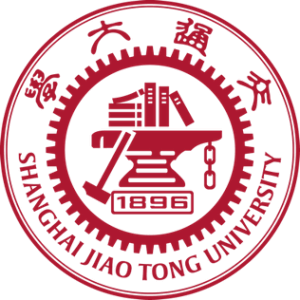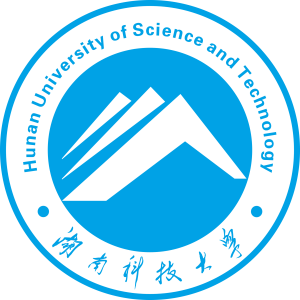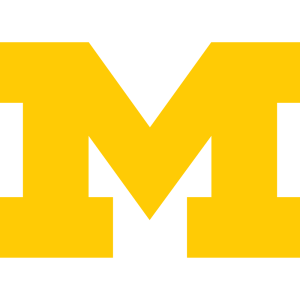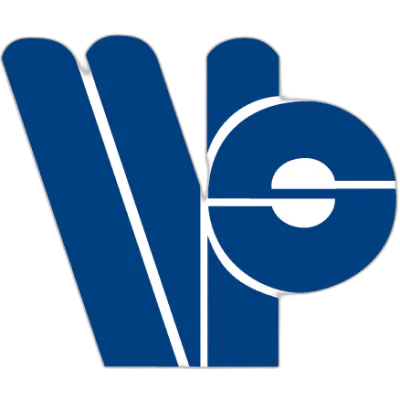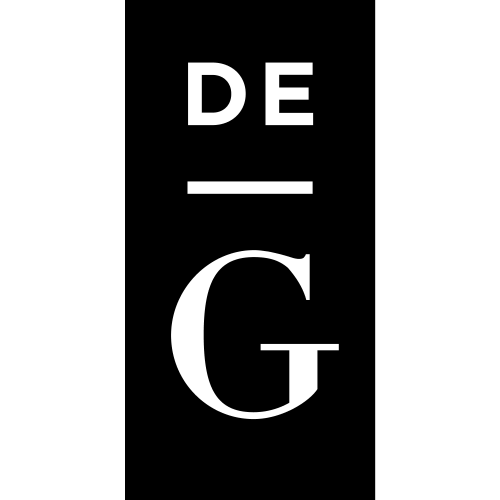Open Access


Ligand‐Induced Control of Photoconductive Gain and Doping in a Hybrid Graphene–Quantum Dot Transistor
Lyudmila Turyanska
1
,
O.N. Makarovsky
1
,
Simon A Svatek
1
,
P.H. Beton
1
,
C. J. Mellor
1
,
A. Patane
1
,
L J. Eaves
1
,
N R Thomas
2
,
Michael Fay
3
,
Alexander J. Marsden
4
,
Neil Wilson
4
3
Nottingham Nanotechnology and Nanoscience Centre Nottingham NG7 2RD UK
|
Publication type: Journal Article
Publication date: 2015-06-05
scimago Q1
wos Q1
SJR: 1.478
CiteScore: 10.7
Impact factor: 5.3
ISSN: 2199160X
Electronic, Optical and Magnetic Materials
Abstract
Recent advances in graphene-based electronics range from the
discovery of fundamental physical phenomena to the development
of new high-performance photosensitive devices. [ 1–5 ]
These applications exploit not only the unique electronic properties
of graphene but also additional functionalities that can be
achieved by capping the graphene layer with another material
or nanostructure, e.g., atomically thin fi lms, [ 6,7 ] carbon nanotubes
[ 8 ] or inorganic nanoparticles. [ 8–10 ] Colloidal semiconductor
quantum dots (QDs) are of particular interest as their optical
properties can be fi ne-tuned by varying their size and/or composition.
[ 11 ] In addition, colloidal synthesis enables QDs to be
functionalized by doping [ 12 ] and/or surface encapsulation. [ 13 ]
Recently, a photoresponsivity of 10 7
A W −1
was achieved by
depositing QDs on graphene and explained in terms of trapping
of photoexcited carriers on the QDs and charge transfer between
them and the graphene layer. [ 9,10 ] This mechanism should be
strongly dependent on the interface between the QDs and graphene.
Furthermore, the ligands that encapsulate the QDs may
provide a means of modifying the transfer of electronic charges
and enhancing the electronic properties of the graphene layer.
Here, we investigate the properties of single layer graphene
(SLG) functionalized with an overlayer of near-infrared PbS
colloidal quantum dots capped with thioglycerol/dithioglycerol
or polyethylene glycol (PEG500 and PEG2000). We demonstrate
that the polarity of the conductivity and the carrier
concentration can be modifi ed, and photoresponsivity of SLG
can be signifi cantly enhanced by the choice of ligands. By
reducing the length of capping ligands, hence the thickness
of the dielectric barrier between the QDs and the SLG, and by
preserving the integrity of the ligand layer, we achieve the effi -
cient transfer of photogenerated carriers from the QDs to the
graphene before recombining, resulting in enhanced photoresponsivities
of up to ≈10 9
A W −1 .
Found
Nothing found, try to update filter.
Found
Nothing found, try to update filter.
Top-30
Journals
|
1
2
3
4
5
|
|
|
Journal of Materials Chemistry C
5 publications, 7.69%
|
|
|
ACS Photonics
3 publications, 4.62%
|
|
|
ACS Applied Electronic Materials
3 publications, 4.62%
|
|
|
Journal of Chemical Physics
2 publications, 3.08%
|
|
|
Nanomaterials
2 publications, 3.08%
|
|
|
2D Materials
2 publications, 3.08%
|
|
|
Japanese Journal of Applied Physics, Part 1: Regular Papers & Short Notes
2 publications, 3.08%
|
|
|
Advanced Functional Materials
2 publications, 3.08%
|
|
|
Small
2 publications, 3.08%
|
|
|
Small Methods
2 publications, 3.08%
|
|
|
Advanced Optical Materials
2 publications, 3.08%
|
|
|
Advanced Electronic Materials
2 publications, 3.08%
|
|
|
ACS Nano
2 publications, 3.08%
|
|
|
ACS applied materials & interfaces
2 publications, 3.08%
|
|
|
Nano
1 publication, 1.54%
|
|
|
Electronics (Switzerland)
1 publication, 1.54%
|
|
|
Frontiers in Materials
1 publication, 1.54%
|
|
|
Nature Photonics
1 publication, 1.54%
|
|
|
Nature Communications
1 publication, 1.54%
|
|
|
Rare Metals
1 publication, 1.54%
|
|
|
Scientific Reports
1 publication, 1.54%
|
|
|
MRS Advances
1 publication, 1.54%
|
|
|
Applied Surface Science
1 publication, 1.54%
|
|
|
Journal of Physics: Conference Series
1 publication, 1.54%
|
|
|
Nanotechnology
1 publication, 1.54%
|
|
|
Chinese Physics B
1 publication, 1.54%
|
|
|
Nano Express
1 publication, 1.54%
|
|
|
Ceramics International
1 publication, 1.54%
|
|
|
Advanced Quantum Technologies
1 publication, 1.54%
|
|
|
1
2
3
4
5
|
Publishers
|
2
4
6
8
10
12
14
|
|
|
Wiley
14 publications, 21.54%
|
|
|
American Chemical Society (ACS)
13 publications, 20%
|
|
|
IOP Publishing
7 publications, 10.77%
|
|
|
Royal Society of Chemistry (RSC)
7 publications, 10.77%
|
|
|
Springer Nature
5 publications, 7.69%
|
|
|
MDPI
4 publications, 6.15%
|
|
|
AIP Publishing
2 publications, 3.08%
|
|
|
Elsevier
2 publications, 3.08%
|
|
|
Japan Society of Applied Physics
2 publications, 3.08%
|
|
|
Institute of Electrical and Electronics Engineers (IEEE)
2 publications, 3.08%
|
|
|
World Scientific
1 publication, 1.54%
|
|
|
Frontiers Media S.A.
1 publication, 1.54%
|
|
|
Nonferrous Metals Society of China
1 publication, 1.54%
|
|
|
Pleiades Publishing
1 publication, 1.54%
|
|
|
Walter de Gruyter
1 publication, 1.54%
|
|
|
American Physical Society (APS)
1 publication, 1.54%
|
|
|
Autonomous Non-profit Organization Editorial Board of the journal Uspekhi Khimii
1 publication, 1.54%
|
|
|
2
4
6
8
10
12
14
|
- We do not take into account publications without a DOI.
- Statistics recalculated weekly.
Are you a researcher?
Create a profile to get free access to personal recommendations for colleagues and new articles.
Metrics
65
Total citations:
65
Citations from 2024:
6
(9.23%)
Cite this
GOST |
RIS |
BibTex |
MLA
Cite this
GOST
Copy
Turyanska L. et al. Ligand‐Induced Control of Photoconductive Gain and Doping in a Hybrid Graphene–Quantum Dot Transistor // Advanced Electronic Materials. 2015. Vol. 1. No. 7. p. 1500062.
GOST all authors (up to 50)
Copy
Turyanska L., Makarovsky O., Svatek S. A., Beton P., Mellor C. J., Patane A., Eaves L. J., Thomas N. R., Fay M., Marsden A. J., Wilson N. Ligand‐Induced Control of Photoconductive Gain and Doping in a Hybrid Graphene–Quantum Dot Transistor // Advanced Electronic Materials. 2015. Vol. 1. No. 7. p. 1500062.
Cite this
RIS
Copy
TY - JOUR
DO - 10.1002/aelm.201500062
UR - https://doi.org/10.1002/aelm.201500062
TI - Ligand‐Induced Control of Photoconductive Gain and Doping in a Hybrid Graphene–Quantum Dot Transistor
T2 - Advanced Electronic Materials
AU - Turyanska, Lyudmila
AU - Makarovsky, O.N.
AU - Svatek, Simon A
AU - Beton, P.H.
AU - Mellor, C. J.
AU - Patane, A.
AU - Eaves, L J.
AU - Thomas, N R
AU - Fay, Michael
AU - Marsden, Alexander J.
AU - Wilson, Neil
PY - 2015
DA - 2015/06/05
PB - Wiley
SP - 1500062
IS - 7
VL - 1
SN - 2199-160X
ER -
Cite this
BibTex (up to 50 authors)
Copy
@article{2015_Turyanska,
author = {Lyudmila Turyanska and O.N. Makarovsky and Simon A Svatek and P.H. Beton and C. J. Mellor and A. Patane and L J. Eaves and N R Thomas and Michael Fay and Alexander J. Marsden and Neil Wilson},
title = {Ligand‐Induced Control of Photoconductive Gain and Doping in a Hybrid Graphene–Quantum Dot Transistor},
journal = {Advanced Electronic Materials},
year = {2015},
volume = {1},
publisher = {Wiley},
month = {jun},
url = {https://doi.org/10.1002/aelm.201500062},
number = {7},
pages = {1500062},
doi = {10.1002/aelm.201500062}
}
Cite this
MLA
Copy
Turyanska, Lyudmila, et al. “Ligand‐Induced Control of Photoconductive Gain and Doping in a Hybrid Graphene–Quantum Dot Transistor.” Advanced Electronic Materials, vol. 1, no. 7, Jun. 2015, p. 1500062. https://doi.org/10.1002/aelm.201500062.





